As we step into 2024, the world of decentralized finance (DeFi) is evolving at breakneck speed, and decentralized exchanges (DEXs) are at the forefront of this revolution. If you’ve been around the trading block as long as I have, you’ll know that the shift from centralized exchanges (CEXs) to DEXs is a seismic shift in how we think about trading, privacy, and financial freedom. But as with any new frontier, DEXs come with their own set of challenges and quirks. So, let’s break down the top five DEXs in 2024 and discuss the challenges they face, all from the perspective of someone who’s been deep in the trading trenches for years.
Top 5 Decentralized Exchanges in 2024
#1. Uniswap
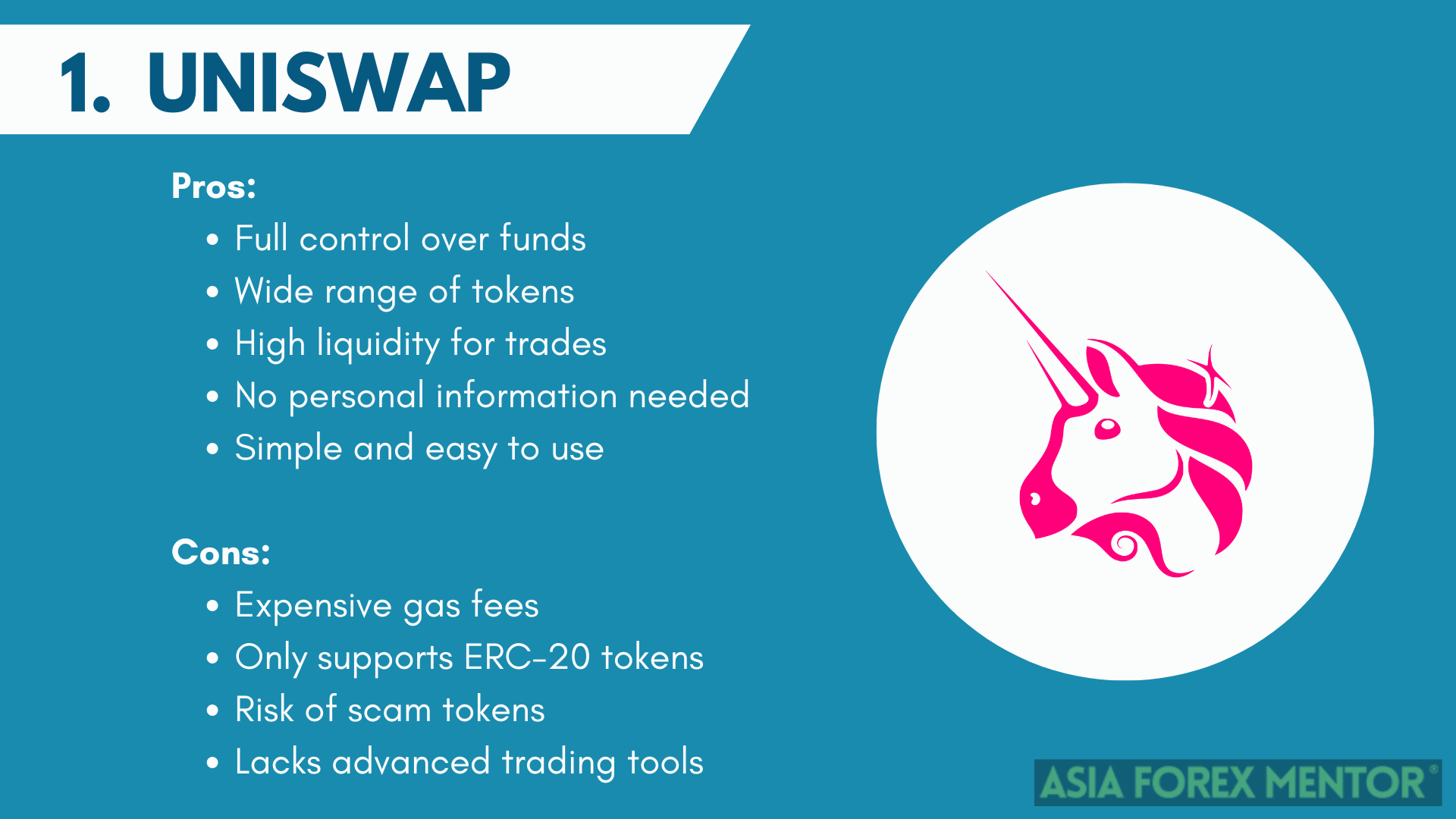
Uniswap is one of the most influential platforms in the decentralized finance (DeFi) space. It’s particularly known for its automated market maker (AMM) model, which revolutionized how we think about liquidity and trading in the crypto world. Back in 2020, when Uniswap introduced its V2 upgrade, it became a pivotal tool for traders, offering decentralized liquidity pools where anyone could trade without a traditional order book.
I’ve been actively using Uniswap since its early days, and I can tell you that the introduction of V3, with its concentrated liquidity, was a game-changer. Liquidity providers can now choose price ranges in which their capital is used, making it far more capital efficient. This means that even with less capital, you can have a significant impact on the market, which reduces slippage and enhances the trading experience.
But, like any system, Uniswap isn’t perfect. The main issue I’ve encountered is with liquidity for lesser-known tokens. If you’re trying to trade a token that isn’t widely recognized, you might find that there’s not enough liquidity to execute your trade without moving the market significantly. This can be a real problem if you’re looking to trade larger amounts. Additionally, as Uniswap expands to other blockchains like Arbitrum, Polygon, and Binance Smart Chain, ensuring that there is consistent liquidity across all these platforms is a complex challenge.
Beyond liquidity, there’s also the issue of gas fees, especially when the Ethereum network gets congested. During peak times, I’ve seen gas fees soar, making smaller trades almost prohibitively expensive. This is where the introduction of layer-2 solutions like Optimism and Arbitrum can make a difference, reducing fees and speeding up transactions.
#2. PancakeSwap
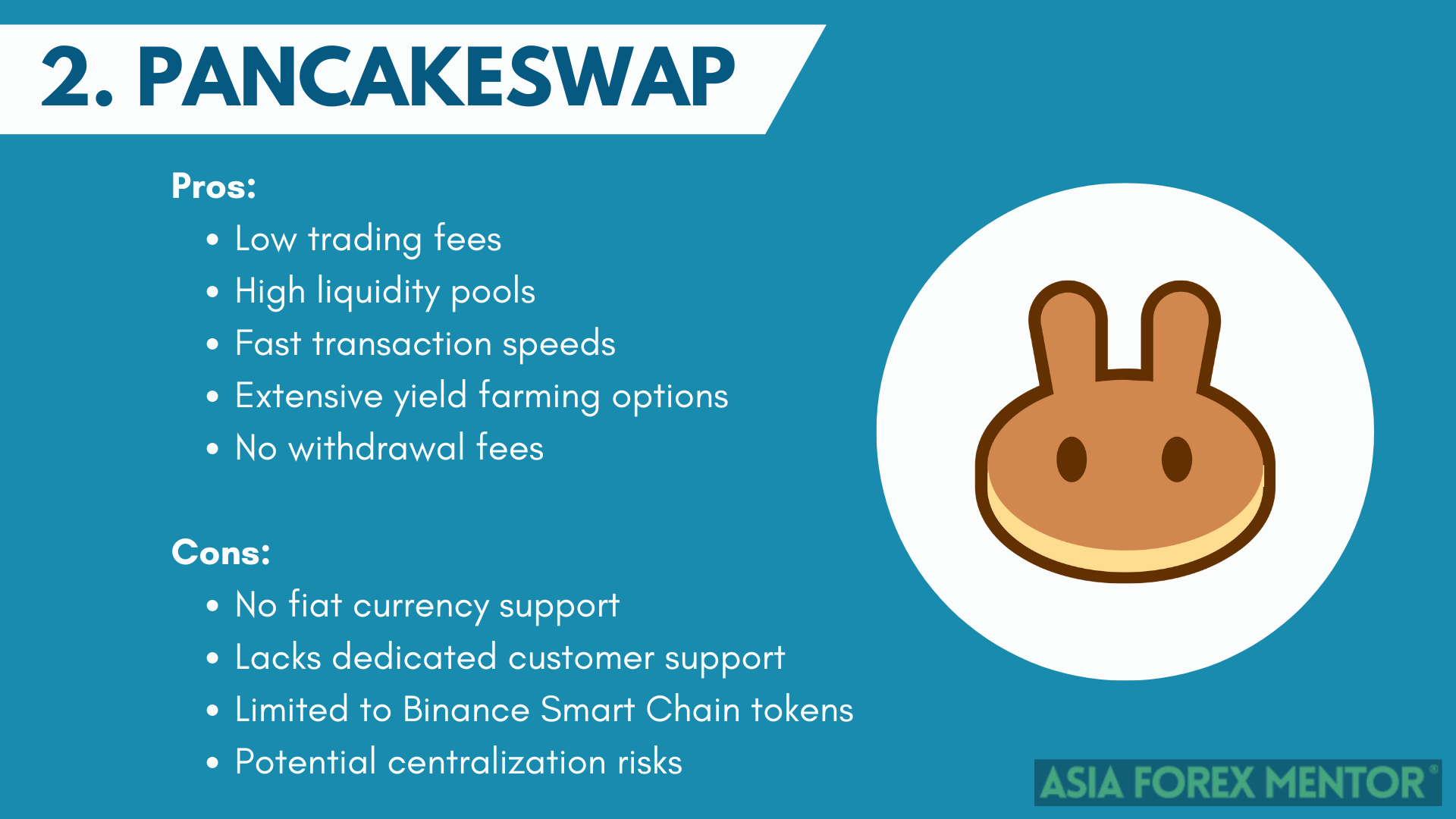
PancakeSwap is the go-to decentralized exchange for anyone trading on the Binance Smart Chain (BSC). It offers a similar AMM model to Uniswap but is tailored specifically for BSC tokens, which means lower trading fees and faster execution times compared to Ethereum-based DEXs.
One of the reasons I’ve gravitated towards PancakeSwap is its innovative approach to incentivizing liquidity. PancakeSwap has introduced features like yield farming, where you can stake your tokens in liquidity pools and earn rewards. This has attracted a massive amount of liquidity to the platform, making it one of the most popular DEXs out there.
However, PancakeSwap isn’t without its challenges. Liquidity can still be an issue for newer or less popular tokens. I recall trying to trade a freshly launched token and encountering significant slippage due to low liquidity. PancakeSwap has also introduced cross-chain trading, allowing users to swap BNB tokens with other network standards like Ethereum and Polygon. While this is a fantastic feature, managing liquidity across multiple chains adds a layer of complexity and can sometimes lead to inconsistent trading experiences.
#3. Curve Finance
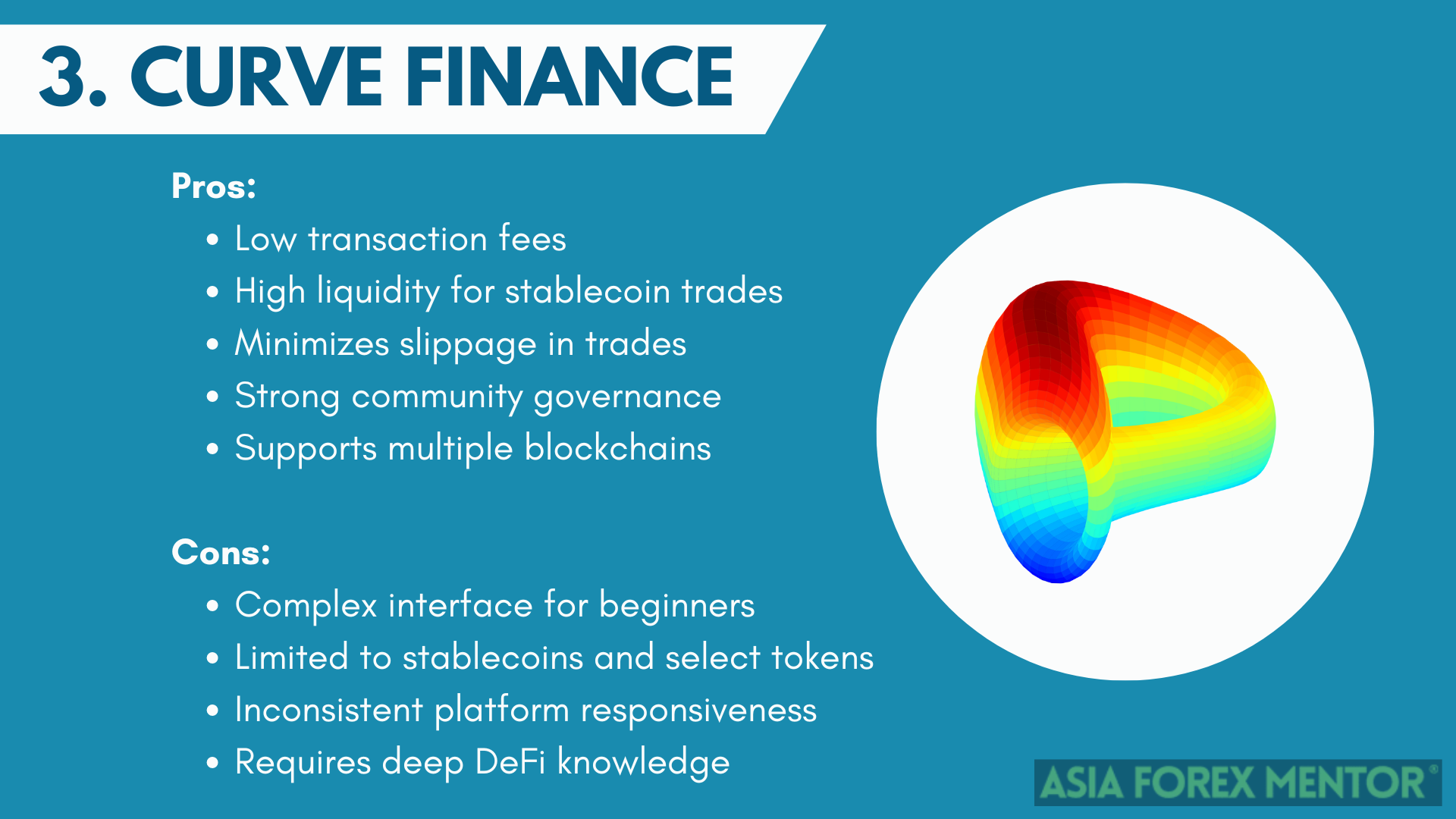
Curve Finance is the DEX of choice for those who prioritize stability and low slippage over high volatility and speculative gains. Specializing in stablecoin trading, Curve offers a unique value proposition: it allows traders to swap stablecoins with minimal price impact, making it ideal for those who want to avoid the wild price swings that are typical in the crypto market.
I’ve used Curve extensively, especially during times of market volatility when I needed to park my funds in stable digital assets. The low slippage and efficient trading experience have made it my go-to platform for stablecoin transactions. Curve’s AMM is designed specifically for assets that have a similar value, like USDC and USDT, which is why it’s able to offer such low slippage compared to other DEXs.
However, Curve’s focus on stablecoins is both its strength and its weakness. While it excels in providing a stable trading environment, it doesn’t offer the same level of excitement or profit potential as other DEXs that support more volatile assets. This has led some traders to overlook Curve in favor of platforms that offer higher returns, even if they come with greater risk.
#4. dYdX
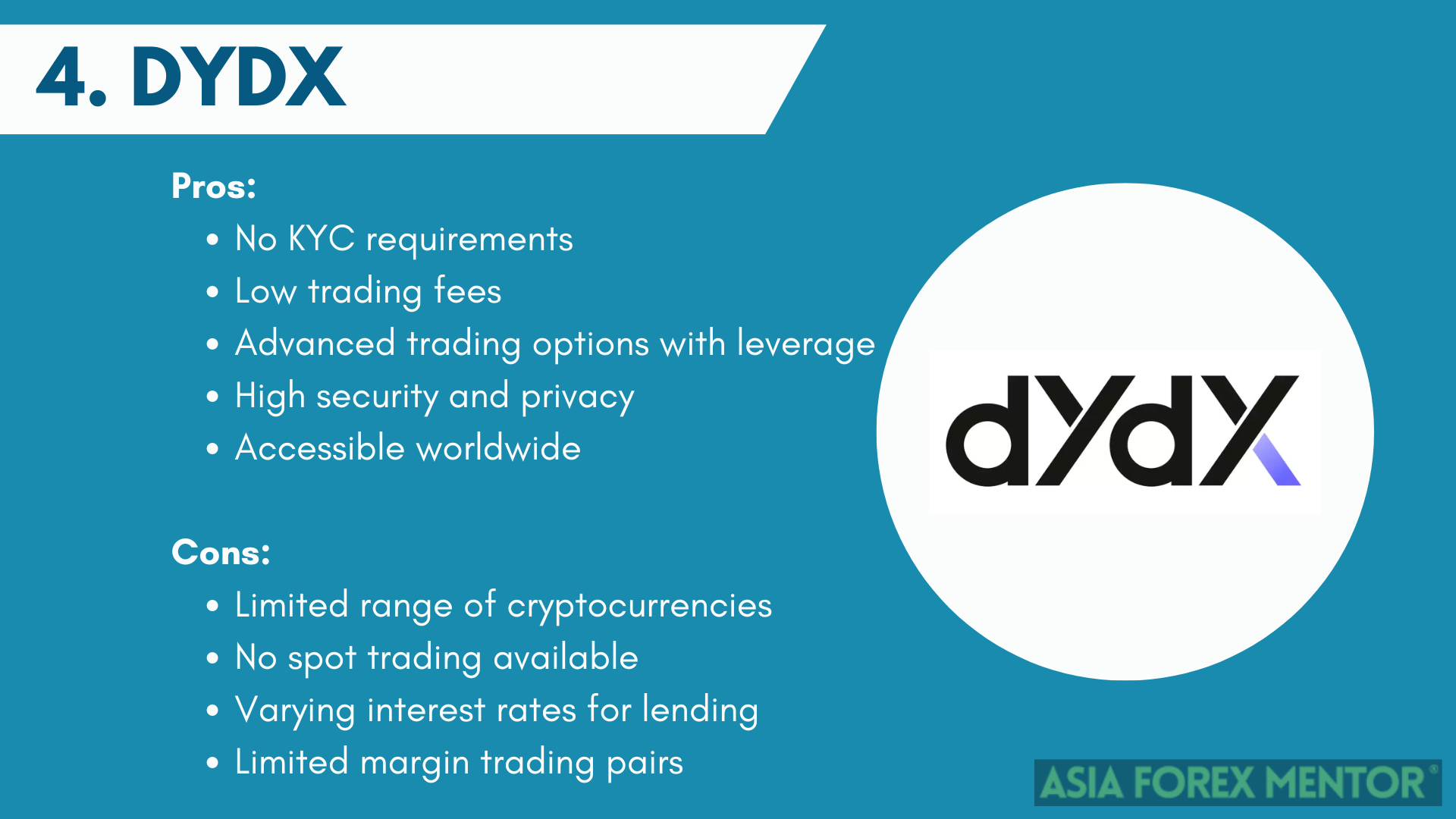
dYdX is not your typical DEX. It’s a sophisticated platform that offers advanced trading features like margin trading, perpetual smart contracts, and leverage of up to 20x. If you’re a trader who enjoys the thrill of high-risk, high-reward strategies, then dYdX is the platform for you.
I’ve used dYdX extensively for trading derivatives, particularly during bear markets when shorting assets can be highly profitable. The platform’s user interface is intuitive, and it offers a range of tools that you would expect from a centralized exchange, such as advanced charting, technical indicators, and various order types. This makes it an attractive option for traders who want to engage in more complex strategies without relying on centralized platforms.
However, trading on dYdX is not without its risks. The high leverage offered by the platform can lead to significant losses if the market moves against you. I’ve seen traders get wiped out because they over-leveraged their positions during volatile market conditions. This is why it’s crucial to have a solid risk management strategy in place when using dYdX.
#5. SushiSwap
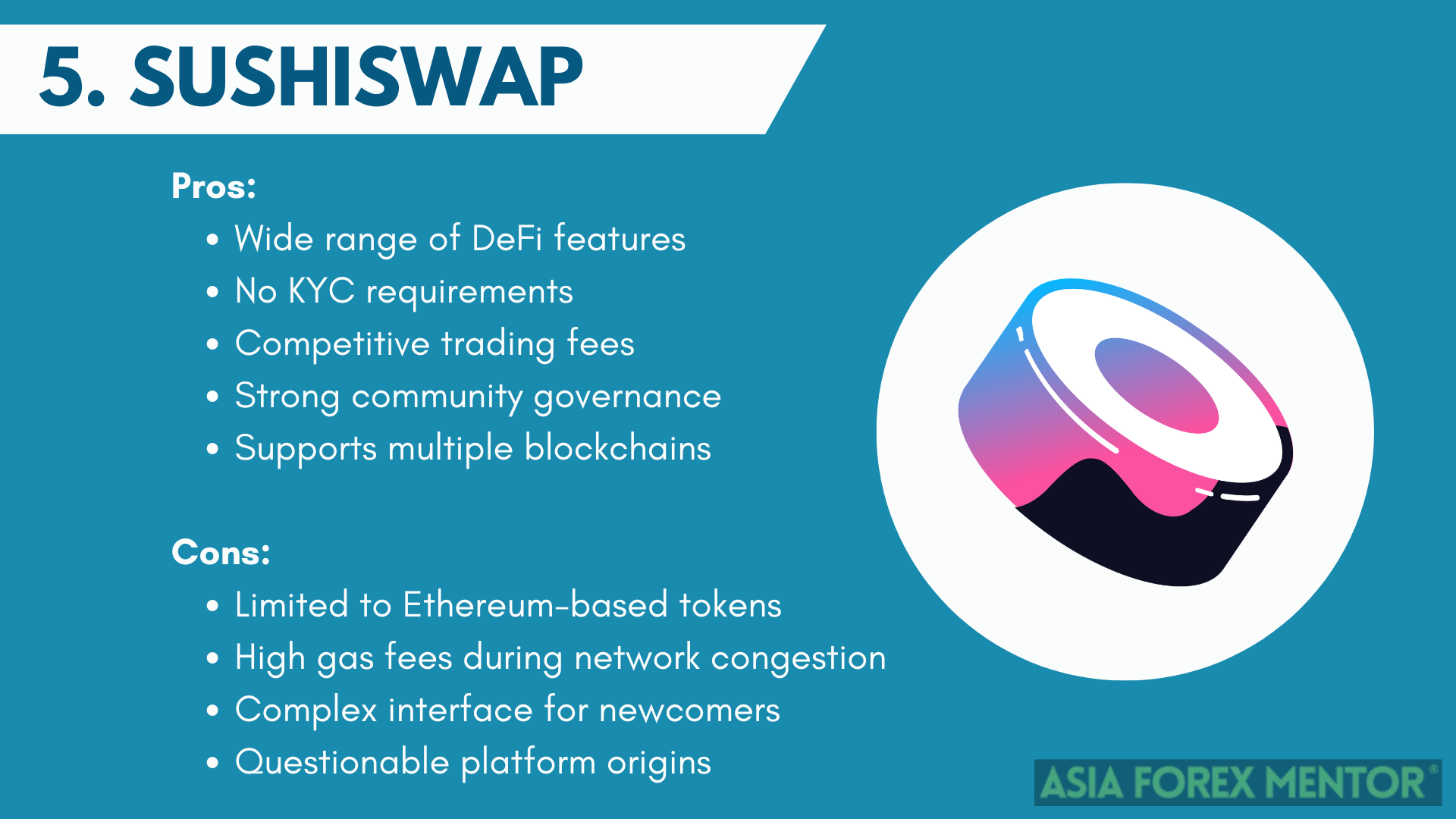
SushiSwap has always been a fascinating platform to me, primarily because of its community-driven nature. What started as a controversial fork of Uniswap has grown into a full-fledged DeFi ecosystem with its own unique features and governance model. SushiSwap offers a variety of services beyond simple token swaps, including yield farming, lending, and staking, making it a versatile platform for DeFi enthusiasts.
I’ve been involved with SushiSwap since its early days, and I’ve seen firsthand how the platform has evolved. One of the things that set SushiSwap apart is its focus on rewarding its community. The platform’s native token, SUSHI, is used not only for governance but also for rewarding liquidity providers and stakers. This has created a strong sense of community ownership, which is something I really appreciate.
However, SushiSwap faces several challenges. One of the most significant is its fee structure. The platform charges a 0.3% fee on all trades, which can add up quickly, especially if you’re an active trader. While this fee is comparable to other DEXs, it can still be a deterrent for those looking to maximize their profits.
Challenges DEXs Face in 2024
Liquidity Issues
Liquidity is the lifeblood of any exchange, and DEXs are no exception. Without sufficient liquidity, trading becomes a nightmare—think higher slippage, wider spreads, and the inability to execute large orders without significantly impacting the market price. This is particularly problematic for newer or lesser-known tokens, which often suffer from low liquidity on DEXs. I’ve seen this firsthand when trying to trade a newly listed token on Uniswap. The lack of liquidity meant that my order significantly moved the market, resulting in a much worse price than I had anticipated.
One of the core reasons DEXs struggle with liquidity is their reliance on individual liquidity providers (LPs). Unlike centralized exchanges, which can pool vast resources to maintain liquidity, DEXs depend on users to supply liquidity to the pools. This decentralized model is great for security and decentralization but can be a double-edged sword when the market for a particular token dries up.
Technical Difficulties and User Experience
Let’s be honest, using a DEX isn’t always the most user-friendly experience. If you’re tech-savvy and have been in the crypto space for a while, navigating a DEX might be second nature. But for newcomers, the learning curve can be steep. I’ve seen traders, particularly those used to the simplicity of centralized exchanges, struggle with the complexities of connecting wallets, understanding gas fees, and dealing with the sometimes clunky interfaces of DEXs.
Efficiency and Scalability
Scalability is a perennial issue in the blockchain space, and DEXs are no exception. During periods of high demand, such as when a new token launches or during a market surge, DEXs can struggle to process transactions quickly. This leads to delays in order execution, which, in the fast-moving world of crypto, can mean the difference between a profitable trade and a missed opportunity.
For instance, during the 2021 bull run, I experienced significant delays when trying to trade on Uniswap due to the congestion on the Ethereum network. Gas fees skyrocketed, and transactions that would normally take seconds were taking minutes, or even longer, to confirm. This is where layer-2 solutions like Optimism and Arbitrum come into play. By offloading some of the transaction processing to these secondary layers, DEXs can reduce fees and increase throughput.
Conclusion
In conclusion, DEXs represent the cutting edge of decentralized finance, offering unparalleled freedom and control over your assets. Platforms like Uniswap, PancakeSwap, Curve Finance, dYdX, and SushiSwap are leading the charge, each with its unique strengths and challenges. As someone who’s been in the trading game for years, I can tell you that DEXs are not just a passing trend—they’re here to stay.

















